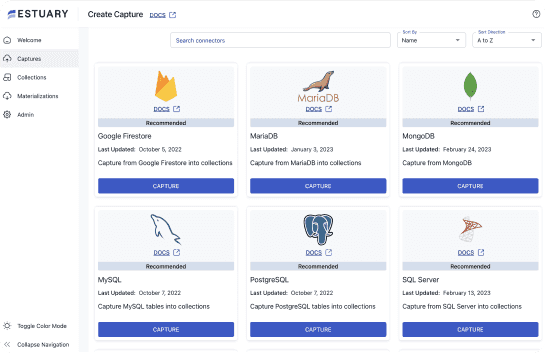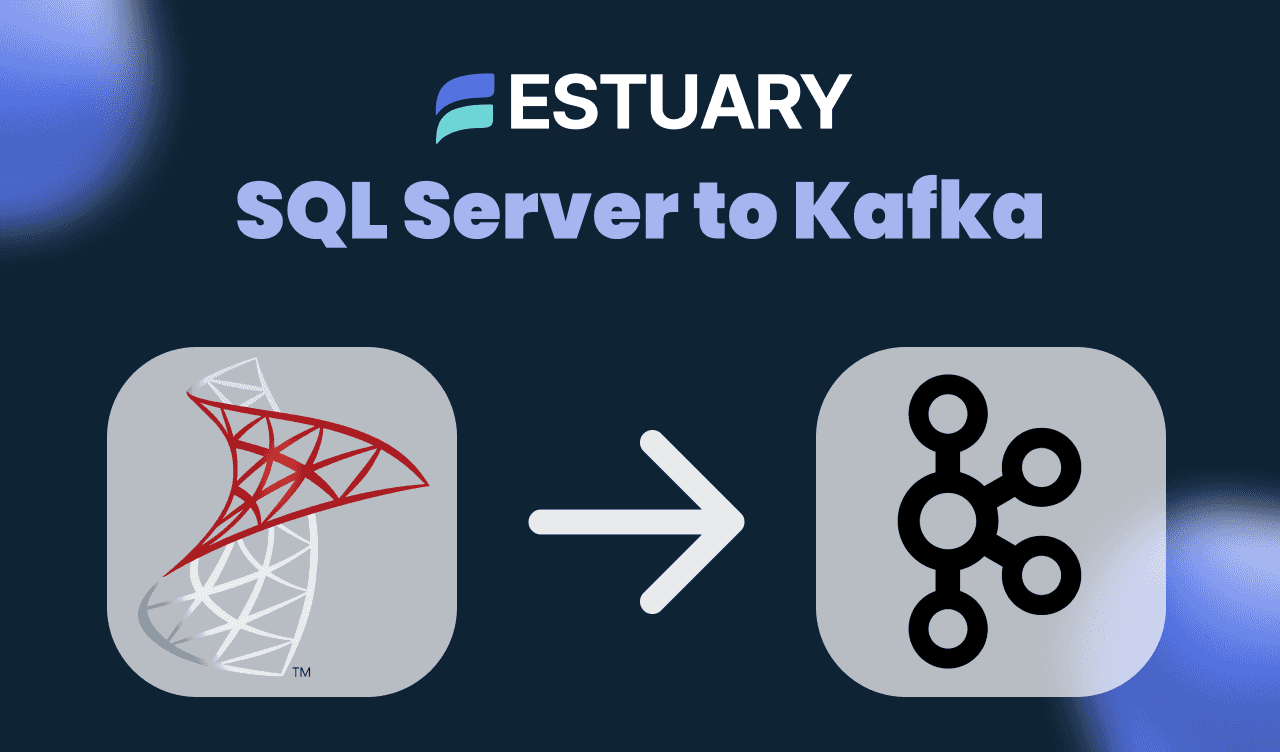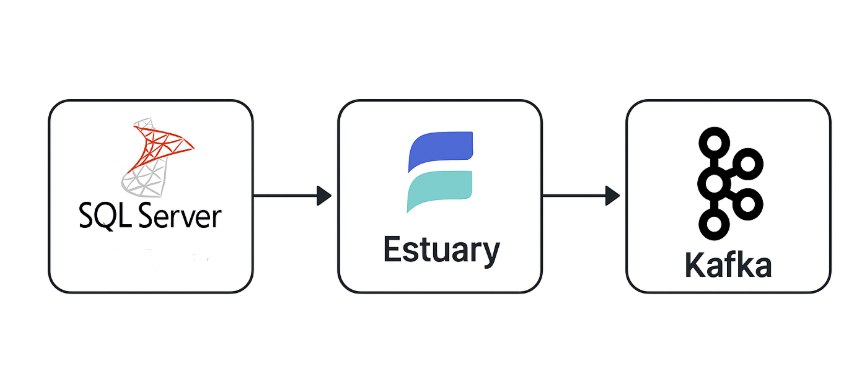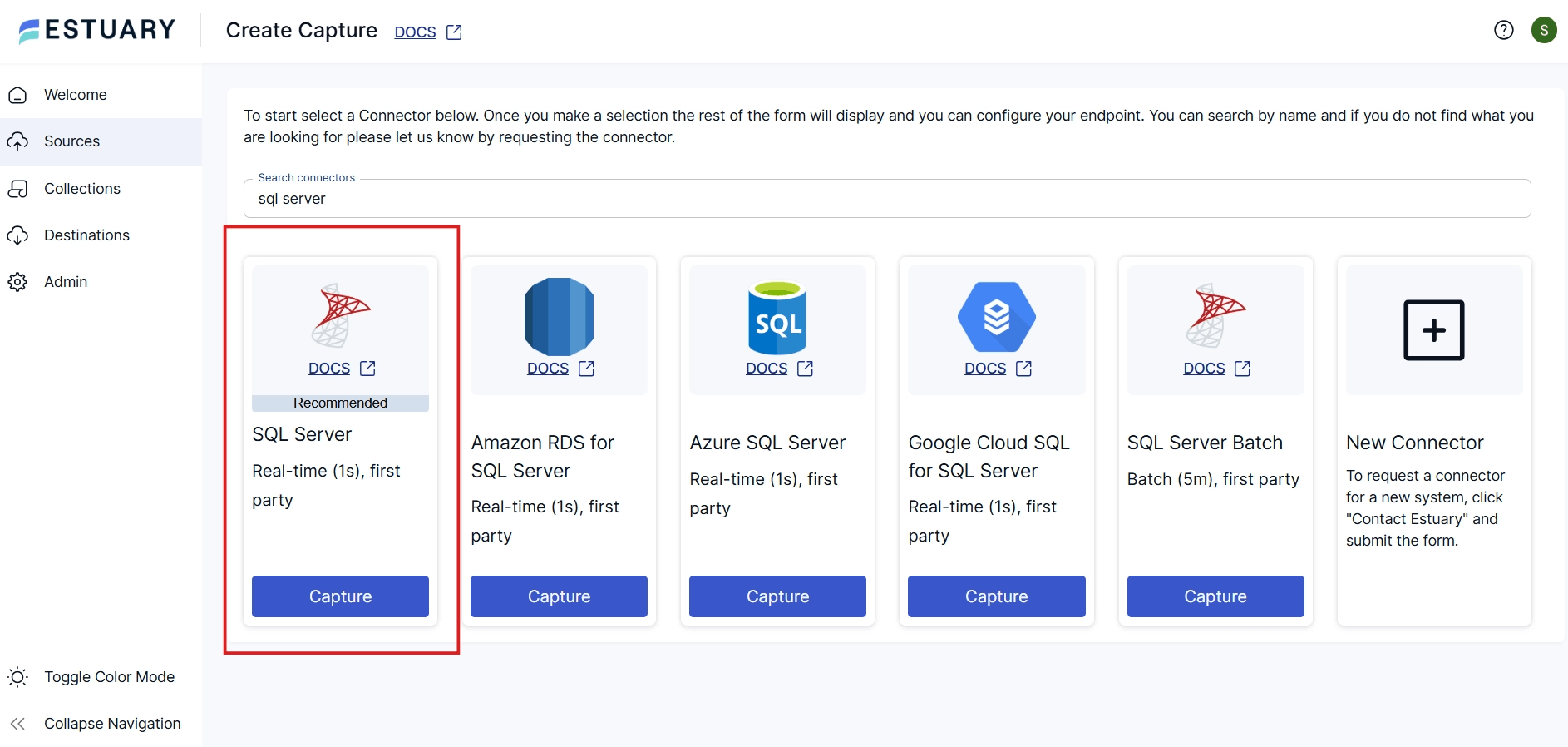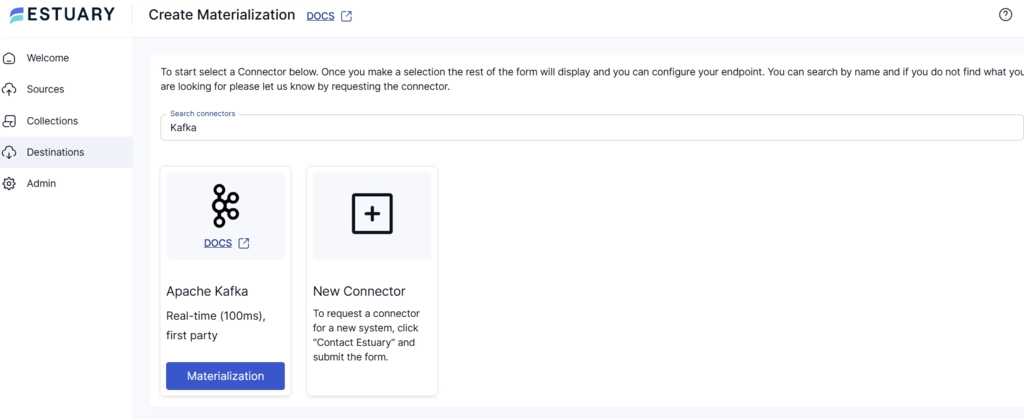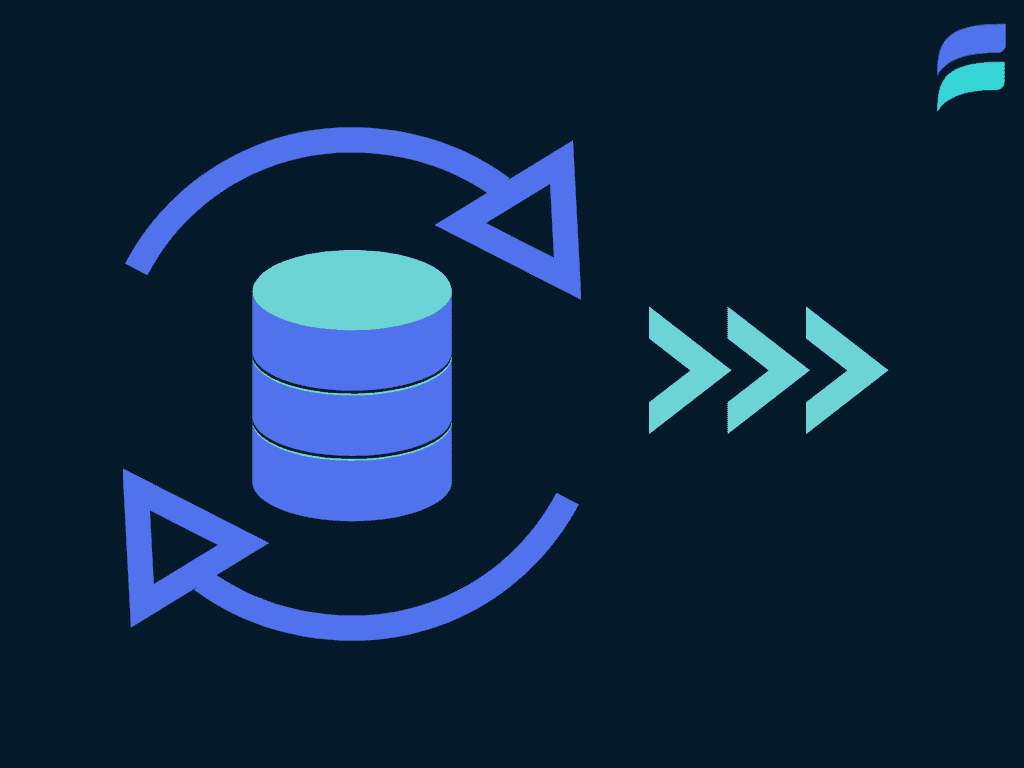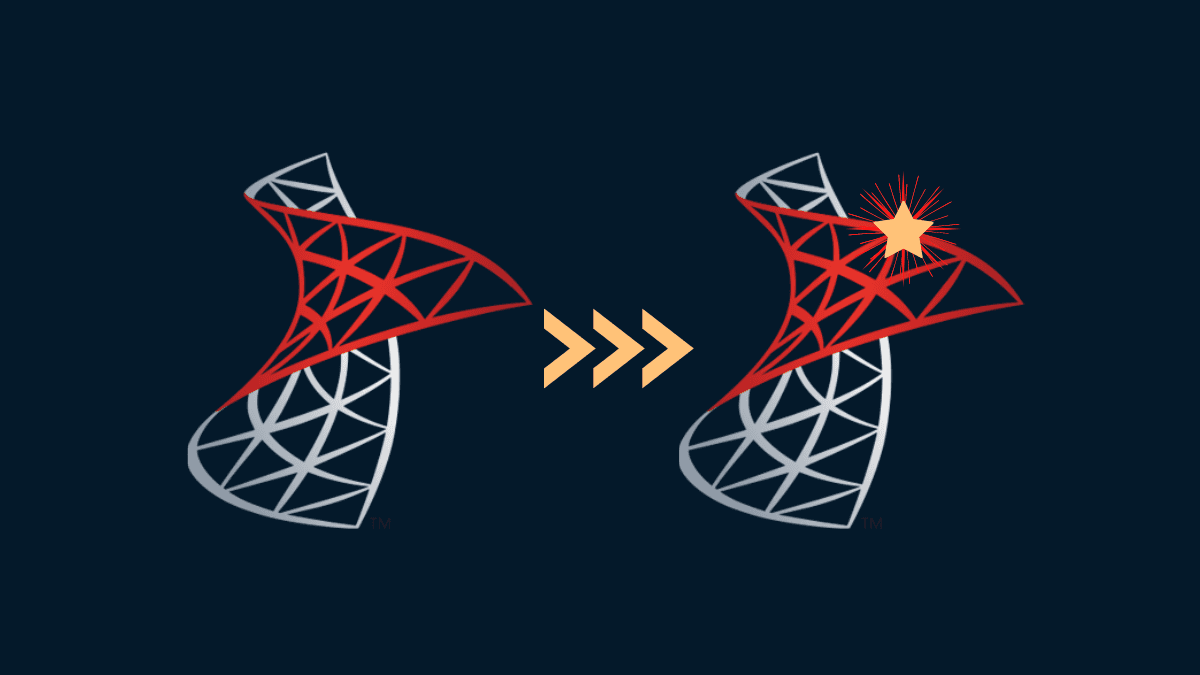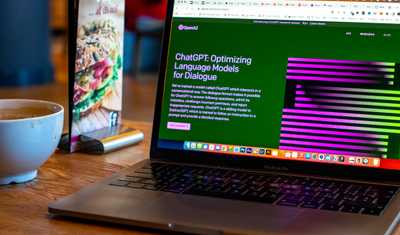
Streaming SQL Server data to Kafka using real-time Change Data Capture (CDC) enables event-driven systems, real-time analytics, and modern data architectures. This guide explains how to build a production-grade SQL Server to Kafka CDC pipeline, compares Debezium and managed approaches, and shows how to deploy a reliable pipeline in minutes using Estuary.
Traditional databases like SQL Server were not designed for streaming workloads. As teams adopt Kafka for analytics, microservices, and data lakes, reliably streaming inserts, updates, and deletes from SQL Server becomes a critical challenge.
The Challenge with SQL Server CDC Pipelines
While SQL Server does support native Change Data Capture (CDC), turning that raw feature into a production-grade Kafka pipeline is a whole different story.
Here’s what most teams run into:
- Manual setup & scripting: You’ll spend hours enabling CDC on each table, managing permissions, and scripting out changes manually.
- Complex tooling: Getting Kafka Connect and Debezium up and running often requires spinning up multiple containers, configuring connectors, and wrestling with compatibility issues.
- Schema headaches: Schema evolution isn’t automatic. You’ll need to manually manage Avro schemas or set up a registry, and hope nothing breaks.
- Scalability concerns: These pipelines often start fine in dev, but break down under real-world data volumes or require constant tuning to stay performant.
- Fragile integrations: One missing primary key or unhandled schema change can bring your pipeline to a halt.
The result? Weeks of effort, flaky data pipelines, and delayed business insights.
Debezium for SQL Server CDC to Kafka
Debezium is the most widely used open-source framework for streaming change data capture (CDC) events from SQL Server into Apache Kafka. It is commonly deployed using Kafka Connect and is often the default choice for teams building SQL Server to Kafka pipelines.
Debezium reads changes from SQL Server’s native CDC tables and converts them into structured Kafka events, making database changes available to downstream consumers in near real time.
How Debezium Works with SQL Server
A Debezium-based SQL Server CDC pipeline typically consists of the following components:
- SQL Server with CDC enabled on the database and source tables
- Debezium SQL Server Connector configured to read CDC tables
- Kafka Connect to run and manage the connector
- Apache Kafka brokers to store and distribute change events
- Schema Registry (commonly Avro or Protobuf) to manage schema evolution
Each database change (INSERT, UPDATE, DELETE) is emitted as a Kafka message containing:
- Operation type (
c,u,d) - Before and after row values
- Transaction metadata (LSN, commit timestamp)
- Schema information for serialization
This architecture provides reliable CDC delivery, but requires careful coordination across multiple systems.
Operational Considerations with Debezium
While Debezium is powerful and flexible, production deployments often introduce operational complexity.
- Kafka Connect management: Kafka Connect clusters must be provisioned, scaled, upgraded, and monitored separately. Connector restarts, task rebalancing, and offset handling require careful tuning to avoid duplicate or missing events.
- Schema evolution management: Debezium commonly relies on Avro schemas and an external schema registry. Schema changes in SQL Server (such as column additions or type changes) must be handled carefully to prevent consumer breakage.
- SQL Server-specific constraints
- Tables require stable primary keys for reliable CDC
- CDC retention settings must be tuned to avoid data loss
- High update volumes can increase CDC table size and processing lag
- Failure and recovery complexity: Connector crashes, CDC cleanup jobs, or misaligned offsets can cause pipeline stalls or event replays. Troubleshooting often requires deep Kafka Connect and Debezium expertise.
Debezium works well for teams with established Kafka platform ownership, but can be heavy for teams looking to minimize infrastructure, operational overhead, and time-to-production.
Meet Estuary: Instant SQL Server to Kafka Streaming
Estuary is a real-time data integration platform designed to simplify complex streaming use cases like SQL Server CDC to Kafka. With minimal configuration, you get:
- Real-time change streaming from SQL Server using built-in CDC
- Reliable, scalable Kafka delivery with at-least-once guarantees
- Schema evolution support (including JSON or Avro format with optional schema registry)
- Zero custom code — configure everything via UI or simple YAML
If your ultimate goal in integrating with a Kafka ecosystem is to reach a Kafka consumer, Estuary lets you ditch maintaining your own Kafka brokers and schema registry. Dekaf streamlines data transfer to Kafka consumers like ClickHouse, Tinybird, StarTree, and more.
But even if you maintain your own Kafka ecosystem, Estuary helps automate the process. Instead of spending days setting up Debezium, Kafka Connect, and managing schema registries, you can deploy a SQL Server to Kafka pipeline in minutes with Estuary.
Step-by-Step: Streaming SQL Server to Kafka with Estuary
Setting up real-time CDC (Change Data Capture) from SQL Server to Kafka is simple with Estuary. Follow these steps to create a fully managed, reliable, and low-latency data pipeline — no custom code required.
Step 1: Enable CDC in SQL Server
Before streaming data, you must enable Change Data Capture (CDC) on your SQL Server database and tables. This is a native SQL Server feature that tracks insert, update, and delete operations.
How to enable CDC:
1. Connect to your SQL Server instance.
2. Run the following command to enable CDC on your database:
plaintextUSE my_database;
EXEC sys.sp_cdc_enable_db;3. Enable CDC on each table you want to replicate to Kafka:
plaintextEXEC sys.sp_cdc_enable_table
@source_schema = 'dbo',
@source_name = 'orders',
@role_name = 'flow_capture';4. Create a dedicated user for the Estuary connector and grant necessary permissions:
plaintextCREATE LOGIN flow_capture WITH PASSWORD = 'secret';
CREATE USER flow_capture FOR LOGIN flow_capture;
GRANT SELECT ON SCHEMA :: dbo TO flow_capture;
GRANT VIEW DATABASE STATE TO flow_capture;Estuary supports self-hosted SQL Server, as well as SQL Server in Azure SQL Database, Amazon RDS, and Google Cloud SQL. Read the complete setup instructions here →
Step 2: Set Up the SQL Server to Kafka Pipeline in Estuary
Once CDC is enabled, use the Estuary dashboard to configure your real-time SQL Server to Kafka pipeline.
Connect SQL Server as a Source:
- Go to Estuary and click “New Capture”.
- Choose the SQL Server source connector.
- Enter the required connection details:
- Host & Port (e.g.,
sql.example.com:1433) - Database name
- Username:
flow_capture - Password: your secure password
- Host & Port (e.g.,
- Estuary auto-discovers CDC-enabled tables and maps them to collections.
- If any tables are missing primary keys, define them manually in the UI.
- Save and publish your capture.
Estuary also supports secure networking via SSH tunnels or IP allowlisting — ideal for production environments.
Step 3: Materialize Change Events to Kafka Topics
Now, connect your SQL Server change events to Kafka by creating a materialization.
Configure the Kafka Connector:
- Choose the Kafka materialization connector.
- Provide Kafka connection details:
bootstrap_servers: e.g.,broker.kafka:9092message_format:jsonoravro- SASL authentication (
SCRAM-SHA-512,PLAIN, etc.) - TLS settings for secure connections
- (Optional) Schema Registry if using Avro
Map Collections to Kafka Topics:
- Bind each Flow collection (e.g.,
sqlserver.orders) to a Kafka topic (e.g.,orders-topic). - Customize topic partitioning and replication if needed.
Advanced YAML config:
Estuary will automatically generate a YAML specification that fits your chosen configuration in the UI. For advanced use cases, you can also manually edit your specification or manage your configuration in an infra-as-code style setup.
As an example, your spec file might look something like this:
plaintextmaterializations:
flow/kafka:
endpoint:
connector:
bootstrap_servers: kafka1:9092
message_format: json
credentials:
auth_type: UserPassword
mechanism: SCRAM-SHA-512
username: kafka-user
password: kafka-pass
bindings:
- resource:
topic: orders-topic
source: flow/sqlserver.ordersEstuary ensures at-least-once delivery, so no change events are lost in transit.
Your Real-Time Pipeline Is Live
With these three steps, you’ve built a production-grade, low-latency pipeline from SQL Server to Kafka.
Debezium vs Estuary for SQL Server to Kafka CDC
| Feature | Debezium + Kafka Connect | Estuary |
| Setup Time | Hours to Days | Minutes |
| Kafka Connect required | Yes | No |
| Managed option | No | Yes |
| Schema Evolution | Manual | Automatic |
| CDC table discovery | Manual | Automatic |
| Backfill & replay | Complex | Built-in |
| Kafka-compatible without brokers | No | Yes |
| Operational overhead | High | Low |
When to Use Each Approach
Use Debezium if:
- You already operate Kafka Connect at scale
- You require low-level control over Kafka internals
- You have dedicated Kafka platform engineers
Use Estuary if:
- You want to minimize infrastructure and operational burden
- You need fast, reliable SQL Server CDC pipelines
- You want Kafka compatibility without Kafka management
- You need predictable performance and predictable TCO
Delivery Guarantees and Failure Modes in SQL Server CDC Pipelines
When streaming SQL Server changes to Kafka, understanding delivery guarantees and failure scenarios is critical for building reliable systems.
Delivery semantics
- Most SQL Server CDC pipelines, including Debezium and Estuary, provide at-least-once delivery
- Duplicate events are possible and must be handled by downstream consumers
- Exactly-once semantics require idempotent consumers or transactional sinks
Common failure scenarios
- CDC retention windows expiring before consumers catch up
- Connector restarts causing event replays
- Schema changes breaking downstream consumers
- Network interruptions between source, Kafka, and consumers
How Debezium handles failures
- Relies on Kafka Connect offsets for recovery
- Requires careful offset and task management
- Recovery behavior depends on connector configuration and operator expertise
How Estuary handles failures
- Uses built-in checkpointing and recovery
- Automatically resumes from the correct CDC position
- Supports controlled replays and backfills without rebuilding pipelines
Understanding these behaviors upfront helps teams design resilient consumers and avoid data loss or silent corruption.
Real-World Use Cases for Streaming SQL Server to Kafka
Here are four powerful use cases where real-time change data capture (CDC) from SQL Server to Kafka unlocks serious value:
1. Data Lake Ingestion
Stream operational database changes directly into cloud data lakes or Kafka-backed lakehouses like Apache Iceberg, Hudi, or Delta Lake.
- Replace slow nightly ETL with continuous updates.
- Keep S3 or Lakehouse tables always fresh.
- Use with tools like Spark, Trino, or Snowflake for downstream analytics.
Perfect for analytics teams, ML pipelines, or centralized data lake architectures.
2. Microservices Eventing
Use SQL Server CDC events in Kafka to power event-driven microservices.
- Trigger actions like email sends, fraud checks, or inventory updates in real time.
- Decouple services from the source database.
- Use Kafka topics as a durable event log.
Ideal for e-commerce, fintech, and logistics platforms with complex workflows.
3. Real-Time Analytics & Dashboards
Continuously stream data to analytics platforms like Redshift, ClickHouse, or Elasticsearch by routing through Kafka.
- Power low-latency dashboards with always-fresh data.
- Reduce reliance on batch ETL jobs.
- Use Estuary’s SQL Server → Kafka → Analytics pipeline to simplify your stack.
Use cases: real-time metrics, ops dashboards, CX monitoring.
4. Audit & Compliance Logging
Capture a complete, append-only trail of every change in your SQL Server tables.
- Materialize into Kafka topics for replay, lineage, or auditing.
- Preserve historical states of sensitive records.
- Avoid complex database triggers or manual logging.
Helpful for healthcare, finance, and compliance-heavy industries.
Conclusion: Your Fast Track to Real-Time SQL Server to Kafka Streaming
Streaming data from SQL Server to Kafka using real-time Change Data Capture (CDC) is a proven way to enable event-driven systems, real-time analytics, and modern data architectures. The challenge isn’t whether CDC is possible, but how much complexity your team is willing to manage to make it reliable in production.
Open-source tools like Debezium provide deep control and flexibility for teams that already operate Kafka Connect and schema registries at scale. For many teams, however, the operational overhead of maintaining connectors, offsets, schemas, and recovery workflows slows down delivery and increases risk.
Estuary offers a simpler path. It captures inserts, updates, and deletes from SQL Server using native CDC and streams them to Kafka with built-in reliability, schema handling, and recovery. Pipelines can be deployed in minutes, without managing Kafka Connect or custom infrastructure, while still remaining compatible with existing Kafka consumers.
Whether you’re powering real-time dashboards, event-driven microservices, or continuously updated data lakes, choosing the right SQL Server to Kafka CDC approach comes down to speed, reliability, and operational ownership. With Estuary, teams can focus on using real-time data rather than maintaining the plumbing behind it.
Ready to Stream SQL Server Data to Kafka?
Spin up your first pipeline in minutes — Try Estuary for free or talk to our team about your use case.
Related Reads
FAQs
How do I set up a real-time SQL Server to Kafka pipeline?
What is the best tool to stream SQL Server data to Kafka?

About the author
Emily is a software engineer and technical content creator with an interest in developer education. She has experience across Developer Relations roles from her FinTech background and is always learning something new.

